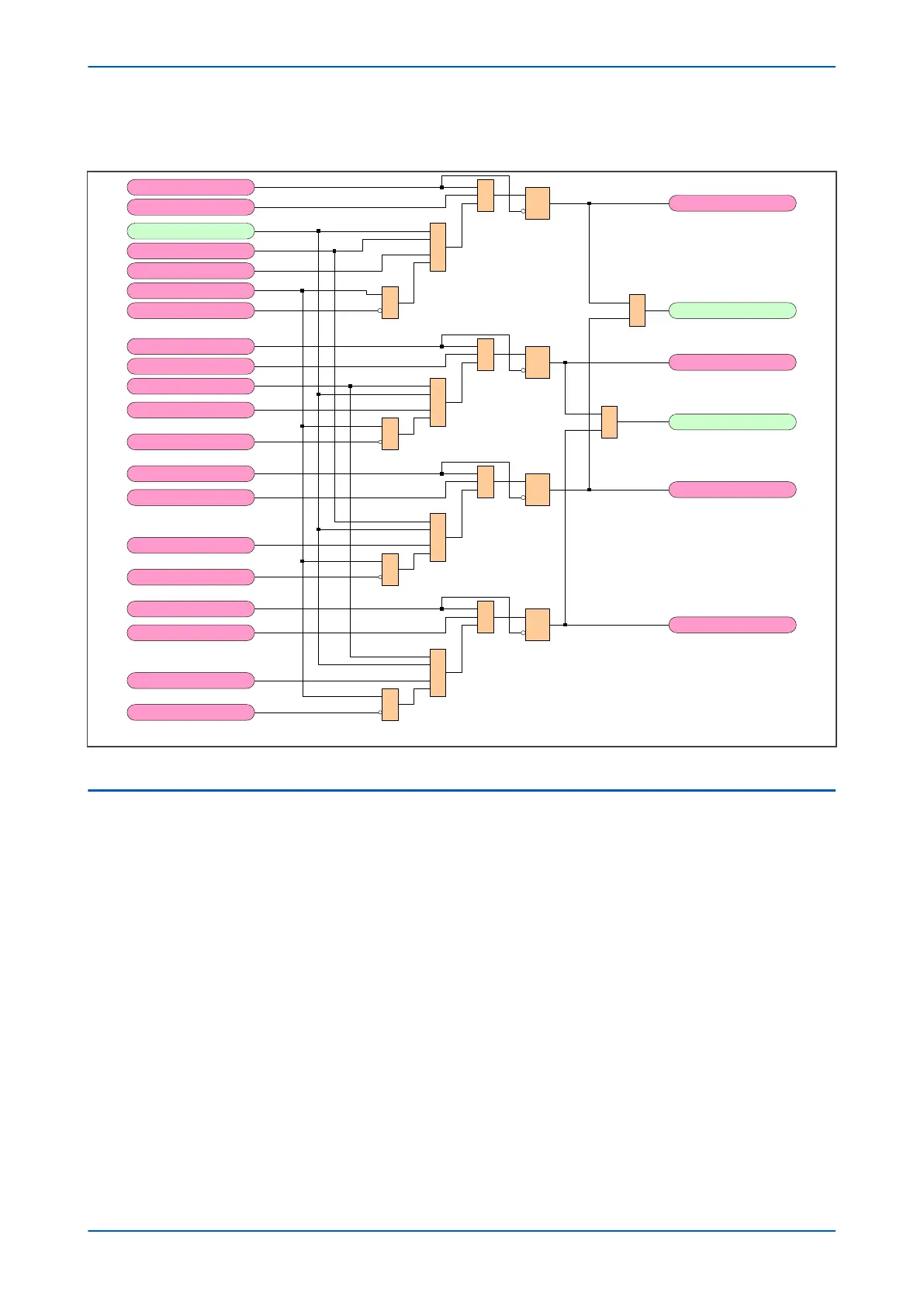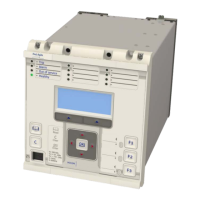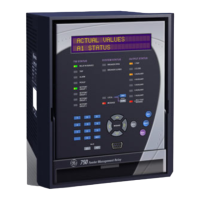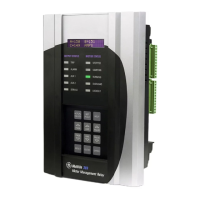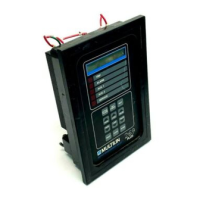5.11.2 3-PHASE AUTORECLOSE CYCLE SELECTION
V03335
CB1L ARIP
CB1 AR 3p InProg
&
CB1 L3 PAROK
Evolve 3Ph
TMEM3P
CB1 OP2/3P
TMEM ANY
CB1 L SPAROK
CB1L3PAR
1
R
Q
S
&
1
CB2L ARIP
CB2 AR 3p InProg
&
CB2L 3PAROK
CB2 OP 2/3P
CB2L SPAROK
CB2L3PAR
1
R
Q
S
&
1
CB2 TMEM 3P
CB1F ARIP
&
CB1F 3PAROK
CB1 OP 2/3P
CB1F SPAROK
R
Q
S
&
1
CB2F ARIP
&
CB2F 3PAROK
CB2 OP 2/3P
CB2F SPAROK
R
Q
S&
1
CB2F 3PAR
CB1F3PAR
Figure 167: Three-phase Autoreclose Cycle Selection logic diagram (Module 21)
5.12
DEAD TIME CONTROL
Once an Autoreclose cycle has started, the conditions to enable the dead time to run are determined by the menu
settings, the circuit breaker status, the protection status, the nature of the AR cycle (single-phase or three-phase),
and the opto-isolated inputs from external sources.
Three settings are involved in controlling the dead time start:
● DT Start by Prot
● 3PDTStart WhenLD
● DTStart by CB Op
The DT Start by Prot determines how the protection action will initiate a dead time. The setting is always visible
and has three options Protection Reset, Protection Op (protection operation), and Disable which
should be selected if you don’t want protection action to start the dead time. These options set the basic
conditions for starting the dead time.
Selecting protection operation to start the dead time can, optionally, be qualified by a check that the line is dead.
Selecting protection reset to start the dead time can, optionally, be qualified by a check, that the circuit breaker is
open (DTStart by CB Op) before starting the dead time. For three-phase tripping applications, there is a further
option to check that the line is dead (3PDTStart WhenLD) before starting the dead time.
P446SV Chapter 11 - Autoreclose
P446SV-TM-EN-1 307
